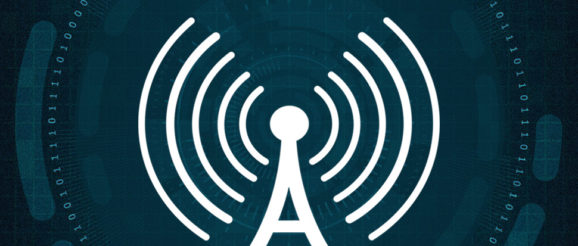The Innovation of 5G Technology Will Transform Reality As We Know It

Technology has seen groundbreaking milestones in recent years, but the innovation of 5G technology may very well be the turning point that will push the millennium into a truly intelligent era. And we’re not talking about fast download speeds and unlimited streaming—we’re talking about drones being used to transport blood to isolated places, remote ultrasounds and surgeries performed on people in rural areas, driverless vehicles replacing manual labor in dangerous mines, devices detecting and stopping illegal logging in protected forests in real-time. 5G is a future where entire industries will become digitized and technology will be harnessed for social and economic development.
“In the next 20 to 30 years, we will enter an intelligent world, where all things can sense, all things are connected, and all things are intelligent,” said William Xu, President of the Institute of Strategic Research at Huawei, during the 5th Huawei Asia-Pacific Innovation Day held on September 3 in Chengdu, China.
“In the intelligent world, sensors will transform the physical world into digital signals; networks will connect all things and all data will be online; and applications powered by big data and AI will make all things intelligent.”

The threshold of a smart world
For those who aren’t aware, 5G is a better, stronger, and faster sibling to 4G. 5G possesses higher bandwidth and lower latency, making it almost 100 times more powerful than 4G. With its power and potential, 5G promises more than just fast streaming—it has the ability to transform vertical sectors.
At the forefront of this big break into the future is the Asia-Pacific region, which is currently leading the world in terms of 5G deployment. 2019 was the birth year for 5G in China, Japan, Australia, and South Korea.
According to Sinan Chen Bo of GSMA, Ltd., more than half of the world’s 5G connections will be located in the Asia-Pacific in 2025. 5G will also contribute an estimated $890 billion to the region’s economy over the course of the next five years. On a global perspective, 5G is expected to boost the global gross domestic product by 0.2 percent, according to Yang Junwei, Project Head of Drones from the World Economic Forum.
This is the fourth industrial revolution—the artificial intelligence (AI) of films, the Jarvis of the real world.
South Korea is currently the global benchmark for the commercial use of 5G, but China’s Huawei has become a driving force in the role of 5G technology in social and economic development.
The tech giant has secured over 50 5G commercial contracts and shipped over 200,000 Massive MIMO AUUs (the technology that enables 5G) worldwide. But aside from rolling out its 5G network for consumer mobile use, it’s the 5G applications in different industries that prove to be the most impressive.

Harnessing tech for social good
Health, environment, agriculture—5G’s potential to drastically improve the systems of various industries is tech at its best.
Some of the many to benefit from 5G are persons with disabilities. StorySign is an AI-enabled application that translates children’s books into virtual sign language through image recognition technology, thus teaching deaf and mute children how to read.
Tech can also protect cultural relics and history by digitizing artifacts and projects to create a smart museum. Agriculture is already seeing the benefit of 5G as farmers have adopted the technology to keep track of their animals. For farmers, their animals are their livelihood, so the equipment to keep track of their location, eating habits, and health is more than a lifesaver.
According to Xu, 5G can also ensure the safety of workers in the mines by removing them from the mines altogether. The technology can operate driverless vehicles to ensure that workers no longer have to face the dangerous and poor working conditions of mines.
5G technology has also paved the way for 8K ultraHD videos that can stream live videos in real time. Virtual reality headsets have also seen an upgrade as 5G technology can give viewers an immersive experience of a panda sanctuary located several kilometers away aired in real-time. The distance could only be covered by the sheer power of 5G’s high bandwidth and low latency.
Meanwhile, Rainforest Connection is a non-government organization (NGO) that partnered with Huawei to build solar-powered monitoring equipment that can identify noises from chainsaws and trucks that are part of illegal logging. Covering 2,500 square kilometers, the analytical capabilities of the equipment will then alert the NGO of illegal logging activities to effectively prevent further environmental destruction.
But one of the greatest innovations of Huawei’s 5G technology is 5G telemedicine. 5G ambulances can potentially increase the rate of treatment success by saving crucial time for the wounded patient. An emergency respondent can complete medical examinations like blood tests, ECG tests, and B-mode scans and send scan images, medical signs, and medical records of the wounded immediately to the emergency doctors on stand by in the hospital. This way, the doctors can prepare—and perform—right away.
Healthcare in rural areas has always been a dilemma for the health sector, but 5G telemedicine can also send data quickly between, for example, a hospital in the city and a clinic deep in the mountains. In China, remote ultrasounds are one such diagnostic applications of 5G telemedicine, which allow doctors to view the live ultrasounds of women in rural provinces in real time.
There is more to tech than the speed of which it can download a movie on Netflix or load a video on YouTube. A smart world is one where everything is integrated, connected, and most importantly, where everything enables the sustainable development of each sector of society.
What countries have 5G technology?
South Korea, Japan, China, Australia, Sweden, the United Kingdom, and the United States are just some of the countries with 5G. The Philippines launched its first 5G technology service via Globe Telecom earlier this year.
